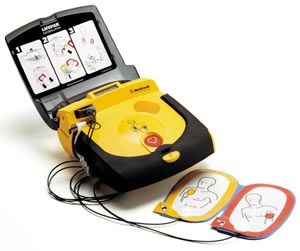3 Possible Ways to Help
Knowing what to do when a person is having a heart attack is crucial and can be that person’s life line. Many people die each year from bystanders not knowing what to do, which is why learning techniques to help a heart attack victim is essential. It can save a friend or your family member’s life.
Cardiopulmonary Resusitation (CPR)
- Step 1
- Step 2
- Step 3
- Step 4
- Step 5
Images from wikihow
- Call 911 for assistance
- Open airway, if the person is on their back, by tilting their head back and lifting their chin.
- Listen for 10 seconds for sounds of breathing, gasping is not considered to be normal breathing.
- Push hard and fast on the center of the chest. Chest compression must be done at about 100 to 120 compressions per minute, similar to the beat of the song “Stayin Alive.” Compression should be at least 2 inches deep, use your upper body weight not just your arms.
- Deliver rescue breaths by opening the airway and pinching the victim’s nose. Place your mouth over the victim’s mouth to create a seal and blow to make the chest rise. Deliver 2 more breaths and proceed with compressions.
Note: Mouth to mouth should only be done if trained. If inexperienced, only do chest compression. - Continue with previous steps until victims show signs of life.
Benefits for administering CPR
Keeps oxygenated blood flowing to the brain and other vital organs. Lack of oxygenated blood can lead to brain death within minutes and death in 10 minutes. (source)
Automated External Defibrillator (AED)

Image from North Hill Hospital
Used to treat sudden cardiac arrest (SCA), it can detect the heart rhythm and send an electric shock to restore a normal heart rhythm. Using this device can save a person’s life, since every minute can reduce survival rate by 10%. (Source)
The AED works because the heart works with an internal electrical system. The electrical system runs from top to bottom. At times these signals can get interruptions causing an arrhythmia. These arrhythmias can cause SCA which can cause death. Receiving a shock from an AED can stabilize the person’s heart beat, which can greatly improve a person’s chance of survival.
An AED usually comes with instructions on how to use it. It can also let the user know when it is appropriate to shock to the victim.
Medication
Not all heart attacks are the same. A heart attack can be sudden but, a heart attack may be subtle and can show no symptoms. For these cases it is recommended to chew on aspirin and call 911. Heart attacks that come from plaque in the arteries can be slow and painful. An aspirin is used because it can prevent the blood from clotting giving the victim time to get help. Researchers have found that chewing an aspirin is much more effective than swallowing it whole. The point out that the chewed aspirin is absorbed much quicker, 5 minutes compared to 12 minutes by swallowing it. (Source)
Resource
“Aspirin for heart attack: Chew or swallow?” Harvard Health Publications: Harvard Medical School, 9, Oct. 2015, www.health.harvard.edu/heart-health/aspirin-for-heart-attack-chew-or-swallow.
“CPR Statistics” American Health Association June 2011, www.heart.org/HEARTORG/CPRAndECC/Whatis%20CPR/CPRFactsandStats/CPR-Statistics_UCM_307542_Article.jsp#
“How to do CPR to an Adult” Wikihow Updated Dec. 11, 2016 http://www.wikihow.com/Do-CPR-on-an-Adult
“Sudden Cardiac Arrest: Imagine If It Were Your Child” North Hill Hospital Blog April 26, 2011 https://northhillshospital.wordpress.com/tag/automated-external-defibrillator/
“Treatment of a Heart Attack” American Health Association June 2016, http://www.heart.org/HEARTORG/Conditions/HeartAttack/TreatmentofaHeartAttack/Treatment-of-a-Heart-Attack_UCM_002042_Article.jsp#.WEnR8Uu1uIx







